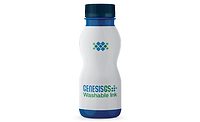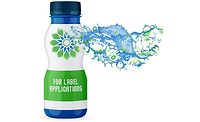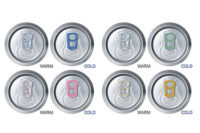In March 2021, streaming service Parmount+ debuted “The Real World Homecoming,” which brought back the original reality TV stars from the inaugural season “The Real World” to viewers TV screens. The cast members were able to discuss topics that were important to them in 1992 but seemed to remain just as important decades later. In the real world of inks and coatings, topics that were front of mind pre-pandemic are finding themselves back on the main stage following the industry’s efforts to pivot as the pandemic unfolded.
“What we hear everywhere is that sustainability is getting back on the agenda, not that it had completely disappeared, but with the pandemic that was [the] priority…,” says Daniel Wachter, chief commercial officer for Colorado Springs, Colo.-based CTI, a technology solutions provider that delivers through inks.
“Certainly sustainability is a top conversation with every brand,” he continues. “That’s not only providing challenges and opportunities for us in terms of our products themselves and how we contribute to sustainability, but also how our products can further enhance some of the sustainability messaging of brand customers that we have.”
Sherry Washburn, business unit manager of supplies for Videojet Technologies, Wood Dale, Ill., also highlights the importance of sustainability within inks and coatings.
“More MEK-free inks and other inks that do not contain CMR (carcinogenic, mutagenic or toxic for reproduction) substances are being introduced into the market as beverage-makers demand safer and more sustainable supplies to apply codes to their products,” she says. “These manufacturers are looking to meet their social responsibility goals with inks that perform as well or better than traditional inks.”
Washburn adds that ink solutions from suppliers are expanding as innovators are developing unique properties with formulas that are free of MEK and CMRs.
“Each beverage manufacturer has their own set of ink requirements that take into account factors such as humidity, temperature, code content and the material to be printed,” she says. “Their demand for well-matched inks that meet certain safety and sustainability standards is driving innovation in ink development.”
Point of differentiation
Beyond sustainability, beverage-makers also are seeking ink and coating solutions that will help their brands connect with consumers.
“[Customers] are looking for options to engage their consumers in different ways to provide some point of sale differentiation and just to do something very cool,” CTI’s Wachter says.
Wachter references an example of the company’s thermochromic technology with Coors Light in which the mountains on the can turn blue to highlight how the brand can deepen its engagement with consumers.
“Just as a tangible example the key benefits that our technology is providing to Coors to many of our other customers is it engages the consumer differently and it is increasing consumer engagement and that increased consumer engagement leads to increased purchase intent, which leads to increased sales,” he says.
Wachter notes that CTI works with a third-party market research firm to identify purchase intent data to share with brands looking to engage with the supplier’s technology in inks.
“[T]o summarize, it’s really the increased consumer engagement, which leads to purchase intent and leads to sales,” he says. “Which is the core value that our technologies provide to brands.”
Within CTI’s portfolio, Wachter identifies thermochromic as the most utilized by beverage brands, but foresees photochromic and glow-in-the-dark technologies’ usage increasing in the space.
“It’s probably the thermochromic technologies that’s mainly used by beer brands by other brands so you have the consumer engagement, which is triggered by the temperature in the can or a bottle and the technology’s on the label,” he explains. “I think there’s significantly more opportunities for photochromic and glow-in-the-dark applications and that’s what we try to convey to brand customers that we’re engaging with and try to make them not only understand what the technology options are from a design perspective but again also what they do from a consumer engagement perspective.”
Videojet’s Washburn also prognosticates the use of fluoresce technology in covert coding solutions to aid distribution operations.
“While overt coding is often used to provide beverage product information to the consumer, covert coding is often used to track the beverage container itself, especially glass bottles and steel kegs,” she says. “Inks that fluoresce under UV and infrared lights can be used to print these discreet codes that are invisible to consumers but visible to distribution channel partners.”
For CTI, another innovation on the horizon is expanding its technology to more printable formats. “A very big topic is we can provide our technologies in a lot of different ways in every commercial printing that you can think of,” Wachter says. “One thing that we cannot provide our technologies is for digital printing so that is very high up in our R&D agenda so that will be probably one of the bigger breakthroughs to be expected moving forward.”






Report Abusive Comment